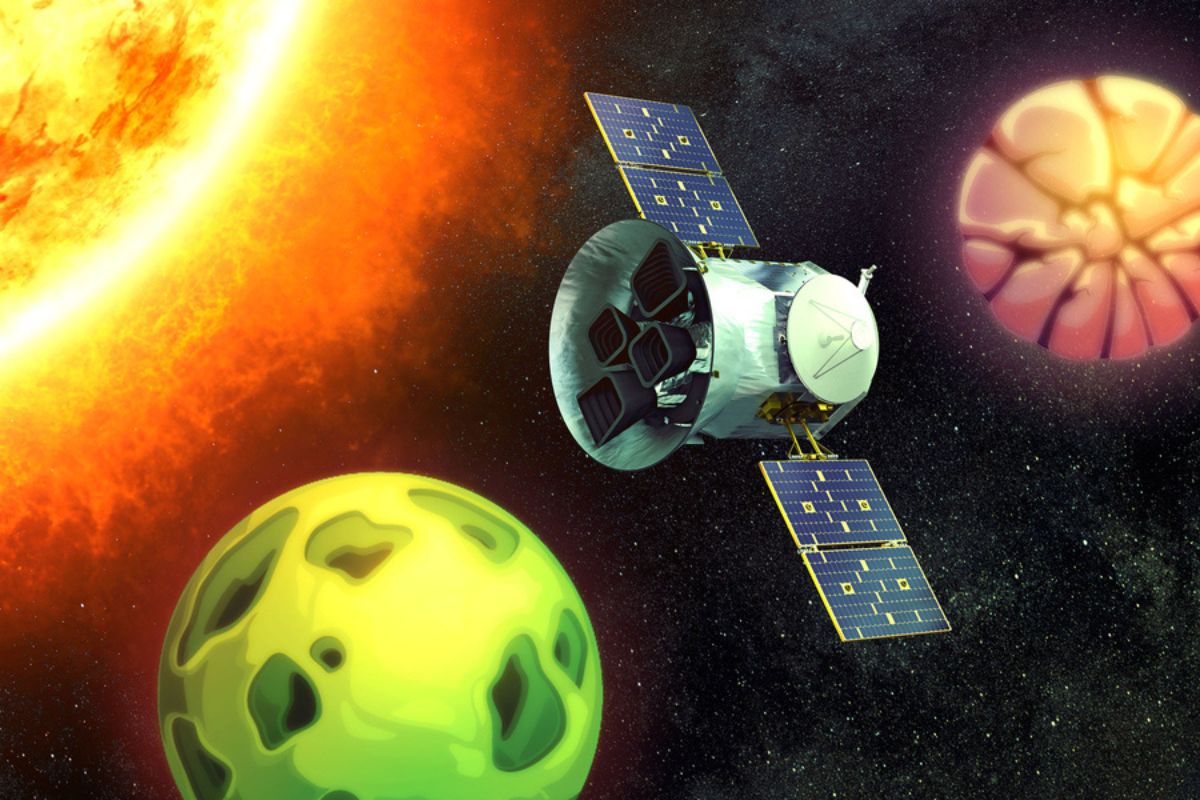
These are two rocky planets the size of Earth, located just 33 light-years away.
Astronomers have discovered two rocky planets in our own ‘cosmic backyard’. The planets orbit the small and cool red dwarf star HD 260655 just 33 light-years away. Nevertheless, scientists are wildly enthusiastic.
Discovery
Both planets were brought to light with the help of planet hunter TESS. The researchers found periodic dips in the brightness of HD 260655 in data from the NASA satellite. To find out whether these dips were caused by two planets, the researchers studied data from the HIRES instrument on ESO’s Extremely Large Telescope (ELT) and from an advanced instrument called CARMENES. This archival data confirmed that the signals TESS had seen do indeed represent two planets around HD 260655. “That’s when we knew we had discovered something very exciting,” said researcher Avi Shporer.
Properties
As mentioned, it concerns two rocky planets. The innermost planet, called HD 260655b, orbits its parent star every 2.8 days. In addition, this planet is about 1.2 times the size of Earth. The second planet, HD 260655c, has an orbit of 5.7 days and is 1.5 times the size of Earth.
Multiplanetary Systems
Although both planets are probably not habitable, the researchers suspect that we can learn a lot from these planets. That’s because the star and its exoplanets are one of the closest multiplanetary systems. This makes these planets an excellent target for further research.
Atmosphere
The hope is that we will, among other things, better understand what these exoplanets and their atmospheres consist of. “Both planets in this system are considered some of the best targets for atmospheric studies, especially because of the brightness of their parent star,” explains researcher Michelle Kunimoto. In this way, the researchers hope to be able to determine whether water or carbon-based substances can be found in the planetary atmospheres. “These planets are fantastic testbeds for such explorations,” Kunimoto said.
Temperature
How high are the temperatures on HD 260655b and HD 260655c? Due to the short orbits of both exoplanets, the researchers estimate that the temperature on the inner planet is a blazing 430 degrees Celsius, while the mercury on the outer planet rises to at least 280 degrees Celsius. “So they are outside the habitable zone,” Kunimoto explains. “It’s too hot there, so there’s probably no liquid water on the surface.”
However, this does not mean the end of the story for our search for extraterrestrial life. “The system could host even more planets,” Shporer said. There are many multiplanetary systems with five or six planets, especially around small stars like this one. Hopefully we’ll find more. And maybe one of them is in the habitable zone. That is just optimistic thinking!”
Source material:
†Astronomers discover a multiplanet system nearby– MIT News
Image at the top of this article: MIT News, with TESS Satellite figure courtesy of NASA